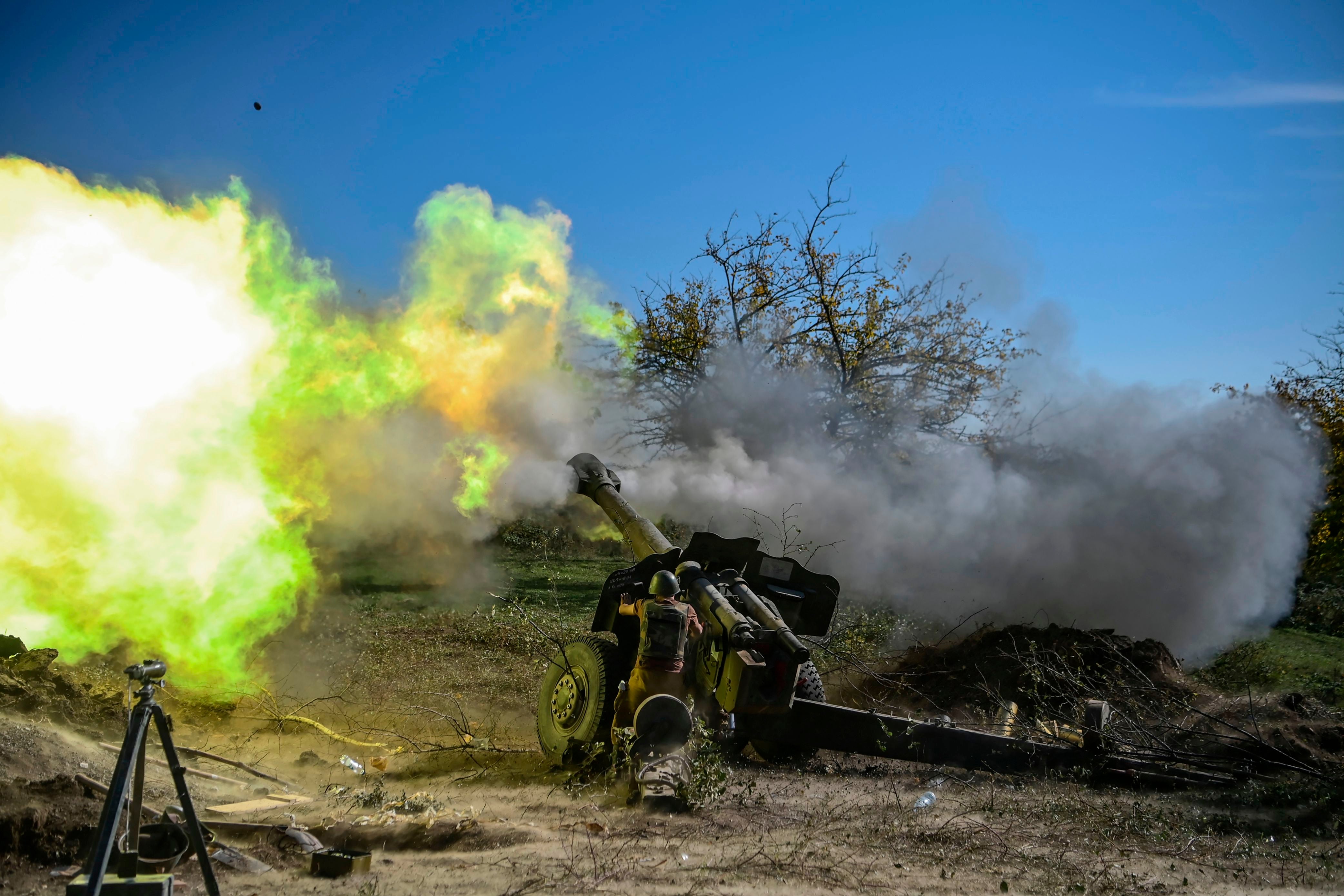‘I want the world to ban these weapons’ : Treating the white phosphorous victims of the Nagorno-Karabakh war
Liz Cookman in Yerevan reports from a specialist burns unit, as Armenia and Azerbaijan accuse each other of using white phosphorous

With eyes wide from trauma, almost every part of Arman Salmanyan’s body is covered in bandages and after two months of treatment he is not getting any better – this, the doctors say, is the effect of incendiary weapon white phosphorus.
At just 19 years old, he is one of a number of soldiers allegedly burnt with the substance during six weeks of brutal conflict in the mountainous breakaway enclave of Nagorno-Karabakh, which left over 5,000 Armenians and Azerbaijanis dead and many more injured.
Now bed-ridden at the National Burns Centre in the Armenian capital Yerevan, Salmanyan has had surgery three times to graft skin from his legs onto his hands, but there is still no progress.
He says he dreams of running again, but he is currently unable to do anything for himself and his parents rotate spending 24 hours a day at his side. He is not able to sit or walk, and the doctors don’t know if he ever will as it’s the first time they have dealt with these sort of injuries.
“I don’t feel angry about anything or anyone because of what happened to me because this is war,” he says. “But I want the world to ban and condemn the use of these munitions.”
International rights groups have accused both countries of war crimes due to the use of banned weapons such as cluster munitions. They have also accused each other of using white phosphorus, something the Azerbaijani defence ministry and Armenian officials deny.
Armenia’s International Committee for the Red Cross declined to comment on the use of the incendiary, but said they are investigating the claims, alongside many others.
While it is legal to use white phosphorus as a smokescreen or to light a battlefield, its use is currently only banned in civilian areas. However, if it comes into contact with humans it has a horrific cost, producing heat and fire that inflicts excruciating burns as deep as the bone. It can also cause respiratory problems and even organ failure.
Last month, a Human Rights Watch report found there was an “urgent need to revisit and strengthen the existing international law governing these weapons” due to the injuries they cause.
“Incendiary weapons, regardless of how they are delivered, cause significant human suffering in the immediate aftermath of attacks and in the weeks and months that follow. They inflict horrific burns that require painful treatment… White phosphorus munitions produce similarly cruel injuries to other [banned] incendiary weapons,” the report, put together with Harvard Law School’s International Human Rights Clinic, said.
The incendiary can also destroy the local environment, infecting plants, contaminating rivers that may provide vital water supplies and it can remain deep within soil for several years.
I want no mother to feel what we feel, no matter what country they are from.
Deputy director of the burns centre Karine Babayan said that 80 per cent of the men they are seeing have injuries consistent with white phosphorus damage. With a black light, she goes from room to room exposing tell-tale glow-in-the-dark speckles on injured men’s skin, which can still be seen months after contact.
“The first three days were very stressful as so many were hospitalised. The doctors were doing their work then going to their rooms and crying,” she says.
“We didn’t realise at first it was phosphorus as there is not much information about it, but then we started to see other problems such as heart problems, liver and breathing problems, people bleeding but with no obvious open injuries, and we realised something was wrong.”
Babayan said that after videos began to emerge that claimed to show white phosphorus raining down from the sky in Nagorno-Karabakh around a month into the war they began investigating the substance. She said they even saw people with possible white phosphorus burns on the first day of the conflict on 27 September.
One of those men, Suren (who did not want to give his full name), a 23-year-old contract soldier, was hospitalised with 50 others on that first day. He says his car was hit with an Israeli kamikaze drone that was carrying the incendiary near the front line, killing his commander and two other soldiers.
Still pacing in pain two-and-a-half months later, Suren’s friend tries to pull a loose thread from the bandages on his leg and it immediately catches fire as it drags along his burnt skin.
“Suren underwent surgery, the wounds recovered and then old wounds reopened. He is still here and not recovering,” says Babayan.
“Our soldiers were treated like dogs for experiment.”
As well as burns, many of the men have fractures, eye and hearing problems from the force of explosions and mental health problems such as PTSD to deal with. The extent of their injuries also takes a significant toll on those close to them, who have to balance their emotions with providing care for them.
Svetlana Meliksetyan, 39, from near Yerevan, has only been home twice since her only son Vartnes Hovakimyan, 19, was burnt with an incendiary on October 15.
“They were left burnt by for one day until the doctors could get to them because no one knew where they were,” she says, her voice wavering in pain and tears filing her tired eyes. “Young men shouldn’t be taken to the front line.”
Mr Hovakimyan is being treated in the bed next to Salmanyan, and is also showing few signs of recovery.
“I want no mother to feel what we feel, no matter what country they are from,” his mother says.



Join our commenting forum
Join thought-provoking conversations, follow other Independent readers and see their replies
Comments